If you use the System Restore function in Windows 10 to revert your operating system to the last known stable point when it was working correctly, you might be interested in creating a System Restore shortcut that opens the System Restore Wizard directly from File Explorer or Desktop. Here is how it can be done.
Advertisеment
System Restore isn't a new feature of Windows 10. It was included in Windows 8 and several previous versions of Windows, going back to Windows Me. It was created to help you fix the OS with just a few clicks when system files or settings get damaged. It automatically creates restore points, which are snapshots of system files, program files, drivers, and registry settings. Later, if you use System Restore to restore your computer to a point in time before some problem happened, System Restore will roll back your PC to a previous version of files and settings from the restore point that you specified. System Restore does not affect your personal documents or media. Plus, you can undo the last restore operation itself if does not resolve your issue. In Windows 8, Microsoft removed the shortcut link to start System Restore from the Accessories -> System Tools folder.
Before you begin, make sure you have System Restore enabled.
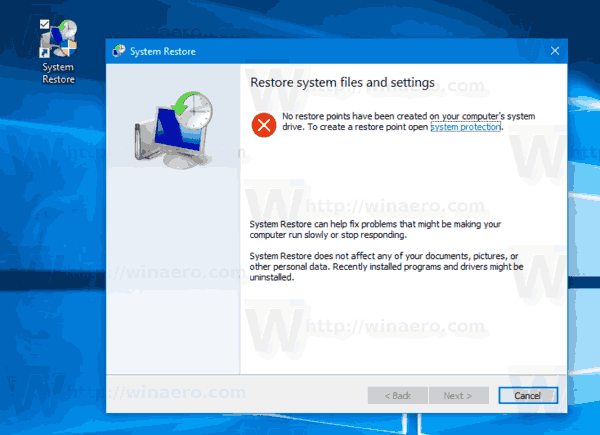
To create the System Restore Wizard shortcut in Windows 10, do the following.
- Right click the empty space on your Desktop. Select New - Shortcut in the context menu (see the screenshot).
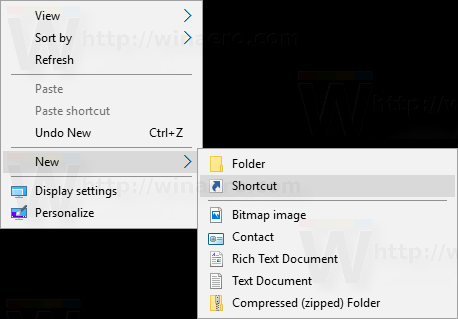
- In the shortcut target box, type or copy-paste the following:
C:\Windows\System32\rstrui.exe
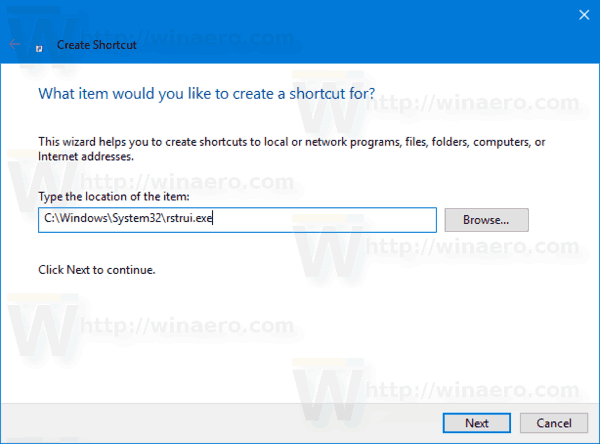
- Use the line "System Restore" without quotes as the name of the shortcut. Actually, you can use any name you want.
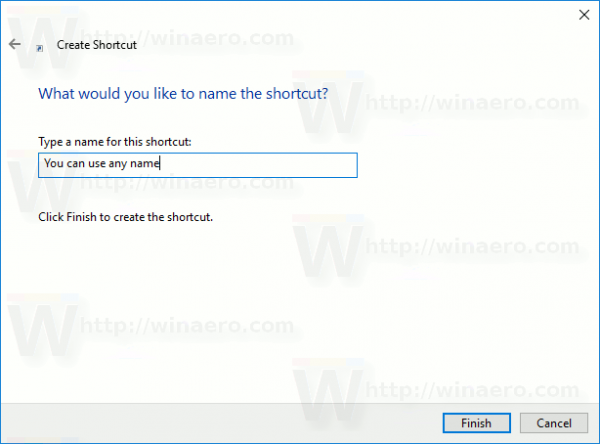 Click on the Finish button when done.
Click on the Finish button when done. - Now, right click the shortcut you created and select Properties.
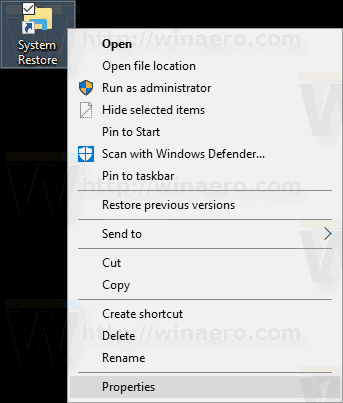 On the Shortcut tab, you can specify a new icon if you wish. You can use the icon from the c:\windows\system32\rstrui.exe file.
On the Shortcut tab, you can specify a new icon if you wish. You can use the icon from the c:\windows\system32\rstrui.exe file.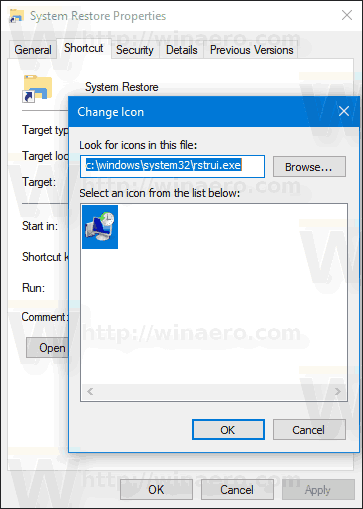 Click OK to apply the icon, then click OK to close the shortcut properties dialog window.
Click OK to apply the icon, then click OK to close the shortcut properties dialog window.
When you double-click the shortcut you created, it will open the System Restore app for you.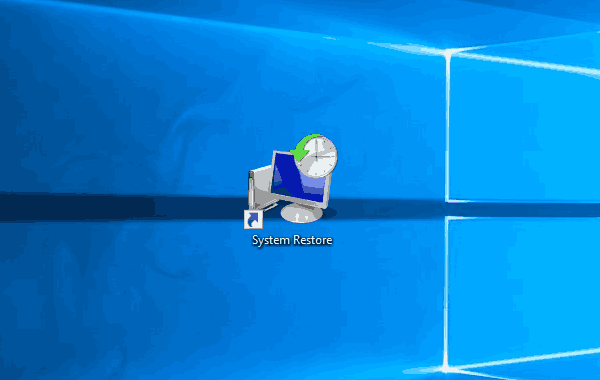
Now, you can move this shortcut to any convenient location, pin it to taskbar or to Start, add to All apps or add to Quick Launch (see how to enable Quick Launch). You can also assign a global hotkey to your shortcut.
Tip: It is a good idea to create a new Restore point.
Support us
Winaero greatly relies on your support. You can help the site keep bringing you interesting and useful content and software by using these options:
